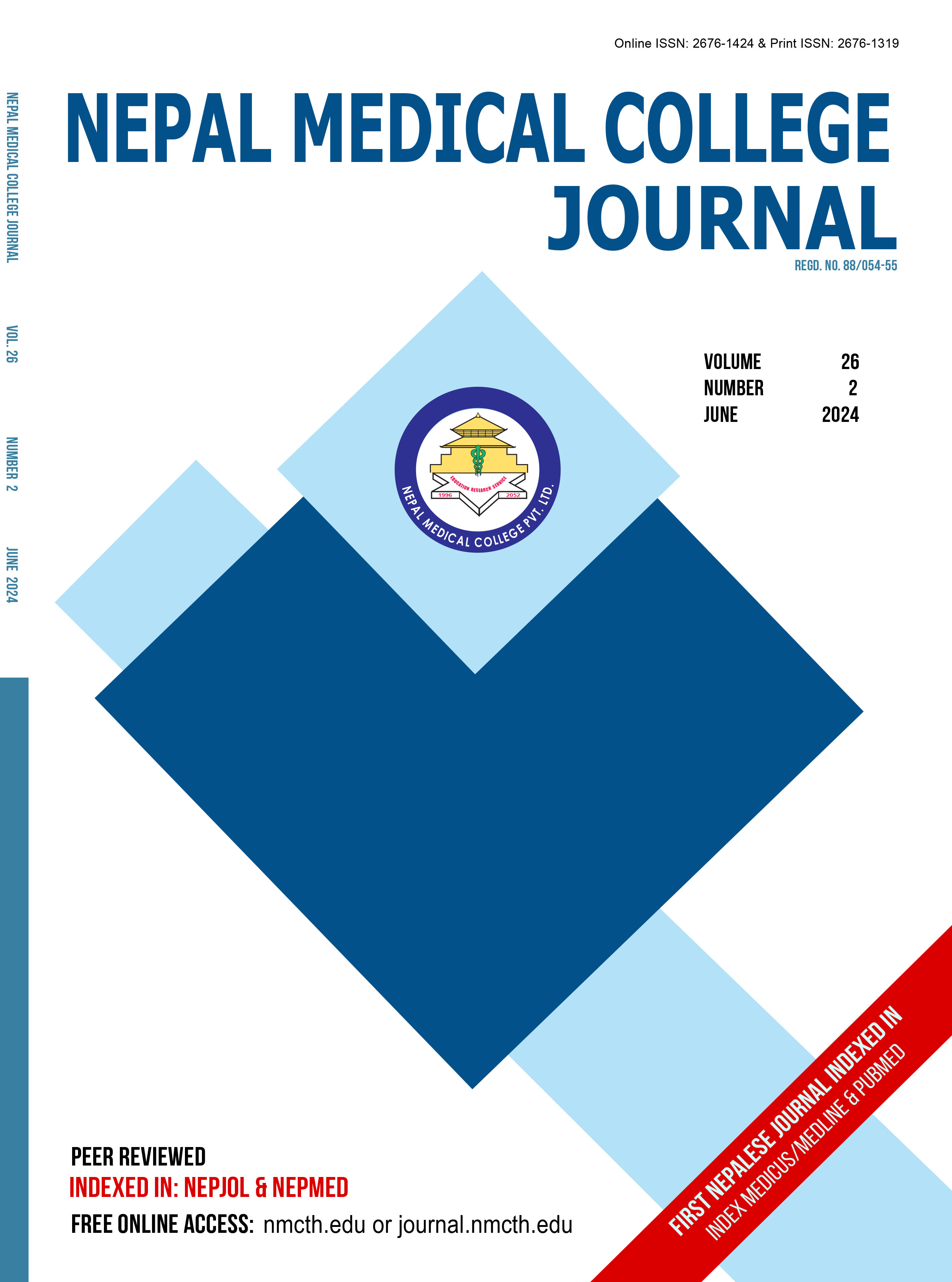Study of Incidence, Risk Factors, and Outcome of Acute Kidney Injury in Neonatal Intensive Care Unit at Tertiary Care Center
DOI:
https://doi.org/10.3126/nmcj.v26i2.67214Keywords:
Acute kidney injury, neonatal sepsis, asphyxia, oliguriaAbstract
Acute Kidney Injury (AKI) remains a notable cause of morbidity and mortality in neonates and the costs of care for patients with AKI are also very expensive, particularly in developing countries like Nepal. The global burden of AKI is quite high specially in lo w-middle-income countries and has very limited data on the incidence of AKI worldwide and the data vary generally in different studies This is a hospital based retrospective cross-sectional study of neonates admitted at Nepal Medical College and Teaching Hospital (NMCTH) from January 2022 till January 2023. Among 318 admitted newborns, incidence of AKI was found to be 18 (5.7%) with male to female ratio of 3:1 in AKI group. The mean length of hospital stay was 13 days, which was longer in AKI group in comparison to non AKI group which was 6.3 days. The rate of neonatal AKI varied within the gestational age cohorts: lower the gestational age more chance of AKI as 28 -32 weeks (n=3/17, 17.6 %) had more incidence of AKI in compare to older gestational age as 32–36 weeks (n=3/50, 6%), and ≥37 weeks (n=12/250, 4.8 %). Meconium stained liquor and pregnancy induced hypertension were the maternal risk factors found to be associated with the development of AKI. Respiratory distress syndrome (RDS) was the commonest cause of neonatal AKI (44.40%), followed by neonatal sepsis (38.90%) and fluid overload (38.90%). In term of outcomes all the cases were discharged from non AKI group while among AKI group mortality was 4/15 (22.2%). Stage 3 AKI had poor prognosis with 100% mortality. Use of nephrotoxic drugs was the main cause of morbidity and mortality of AKI in both discharged and expired group. This showed that this vulnerable population need to be taken care early with effective management and awareness should be developed for the better understanding of the epidemiology of AKI in neonates as there is high risk of developing chronic kidney disease (CKD).
Downloads
Downloads
Published
How to Cite
Issue
Section
License
Copyright (c) 2024 Nepal Medical College Journal

This work is licensed under a Creative Commons Attribution 4.0 International License.
This license enables reusers to distribute, remix, adapt, and build upon the material in any medium or format, so long as attribution is given to the creator. The license allows for commercial use.




